Name Eugenie Montijo | ||
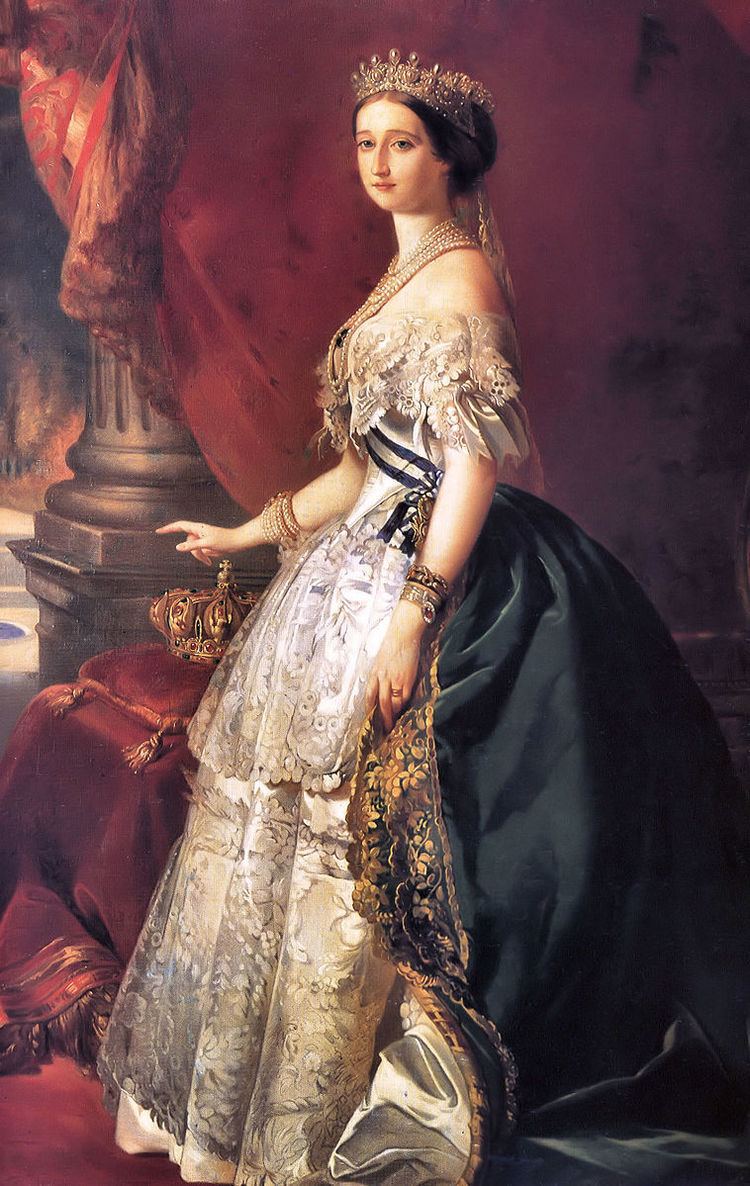 | ||
Tenure 30 January 1853 – 11 January 1871 Born 5 May 1826Granada, Spain ( 1826-05-05 ) Issue Napoleon Eugene, Prince Imperial | ||
Sur les traces d eugenie de montijo
Doña María Eugenia Ignacia Augustina de Palafox y KirkPatrick, 16th Countess of Teba and 15th Marchioness of Ardales (5 May 1826 – 11 July 1920), known as Eugénie de Montijo ([øʒeni də montiχo]), was the last Empress consort of the French, from 1853 to 1871, as the wife of Napoleon III, Emperor of the French.
Contents
- Sur les traces d eugenie de montijo
- Youth
- Marriage
- Public life
- Biarritz
- Role in Franco Prussian War
- After the Franco Prussian War
- Legacy
- In popular culture
- Titles from birth to death
- Honours
- Film portrayals
- References
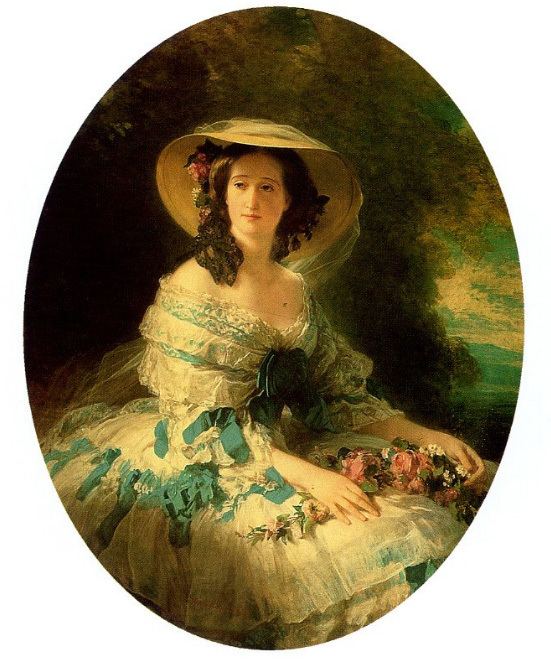
Youth

The last Empress of the French was born in Granada, Spain, to Don Cipriano de Palafox y Portocarrero (1785–1839), Grandee, whose titles included 8th Count of Ablitas, 9th Count of Montijo, 15th Count of Teba, 8th Count of Fuentidueña, 14th Marquess of Ardales, 17th Marquess of Moya and 13th Marquess of la Algaba and his half-Scottish, quarter-Belgian, quarter-Spanish wife (whom he married on 15 December 1817), María Manuela Enriqueta Kirkpatrick de Closbourn y de Grevigné (24 February 1794 – 22 November 1879), a daughter of the Scots-born William Kirkpatrick of Closbourn (1764–1837), who became United States consul to Málaga, and later was a wholesale wine merchant, and his wife, Marie Françoise de Grevignée (born 1769), daughter of Liège-born Henri, Baron de Grevignée and wife Doña Francisca Antonia Gallegos (1751–1853).
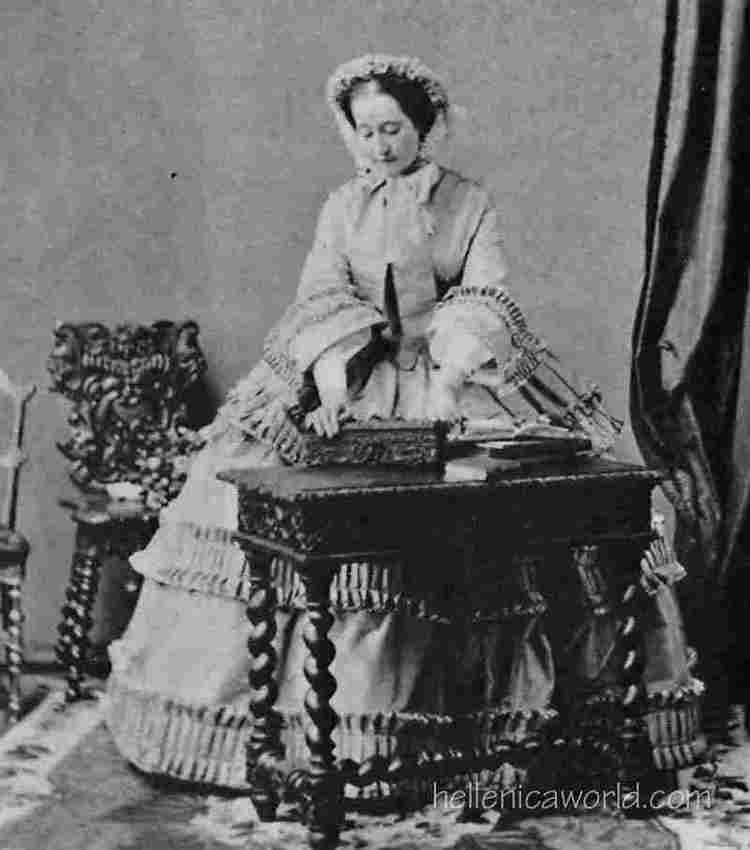
Eugenia's older sister, María Francisca de Sales de Palafox Portocarrero y Kirkpatrick, nicknamed "Paca" (24 January 1825 – 16 September 1860), who inherited most of the family honours and was 12th Duchess of Peñaranda Grandee of Spain and 9th Countess of Montijo, title later ceded to her sister, married the Duke of Alba in 1849. Until her own marriage in 1853, Eugénie variously used the titles of Countess of Teba or Countess of Montijo, but some family titles were legally inherited by her elder sister, through which they passed to the House of Alba. After the death of her father, Eugenia became the 9th Countess of Teba, and is named as such in the Almanach de Gotha (1901 edition). After Eugenia's demise all titles of the Montijo family came to the Fitz-Jameses (the Dukes of Alba and Berwick).
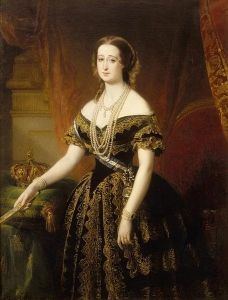
On 18 July 1834, María Manuela and her daughters left Madrid for Paris, fleeing a cholera outbreak and the dangers of the First Carlist War. The previous day, Eugenia had witnessed a riot and murder in the square outside their residence, Casa Ariza.

Eugénie de Montijo, as she became known in France, was formally educated mostly in Paris, beginning at the fashionable, traditionalist Convent of the Sacré Cœur from 1835 to 1836. A more compatible school was the progressive Gymnase Normal, Civil et Orthosomatique, from 1836 to 1837, which appealed to her athletic side (a school report praised her strong liking for athletic exercise, and although an indifferent student, that her character was "good, generous, active and firm"). In 1837, Eugénie and Paca briefly attended a boarding school for girls on Royal York Crescent in Clifton, Bristol, to learn English. Eugénie was teased as "Carrots", for her red hair, and tried to run away to India, making it as far as climbing on board a ship in Bristol docks. In August 1837 they returned to school in Paris. However, much of the girls' education took place at home, under the tutelage of English governesses Miss Cole and Miss Flowers, and family friends such as Prosper Mérimée and Henri Beyle.
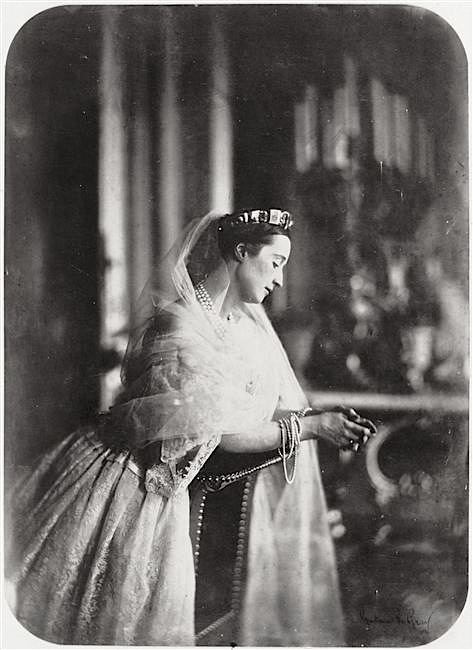
In March 1839, on the death of their father in Madrid, the girls left Paris to rejoin their mother there. In Spain, Eugénie grew up into a headstrong and physically daring young woman, devoted to horseriding and a range of other sports. She was rescued from drowning, and twice attempted suicide after romantic disappointments. She was very interested in politics, and became devoted to the Bonapartist cause, under the influence of Eleanore Gordon, a former mistress of Louis Napoléon. Thanks to her mother's role as a lavish society hostess, Eugénie became acquainted with Isabel II and the prime minister Ramón Narváez. María Manuela was increasingly anxious to find a husband for her daughter, and took her on trips to Paris again in 1849 and England in 1851.
Marriage
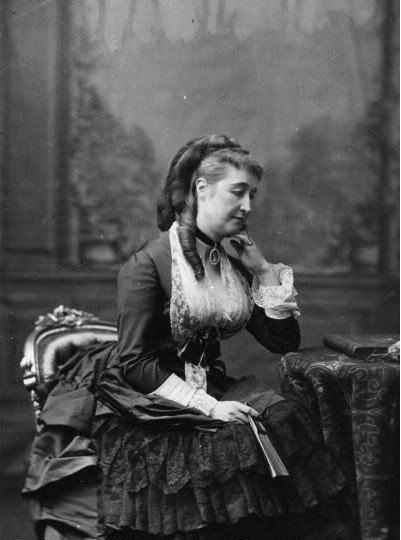
She first met Prince Louis Napoléon after he had become president of the Second Republic, with her mother, at a reception given by the "prince-president" at the Elysée Palace on April 12, 1849. Her beauty attracted Louis Napoleon, who, as was his custom, tried to seduce her, but Eugénie told him to wait for marriage. "What is the road to your heart?" Napoleon demanded to know. "Through the chapel, Sire", she answered.
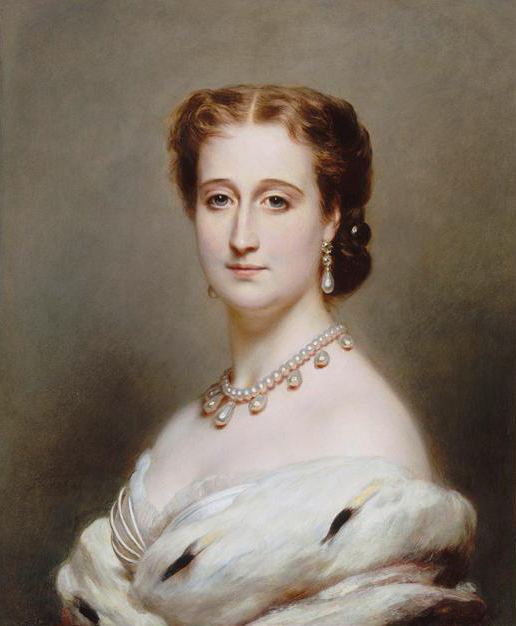
In a speech on 22 January 1853, Napoleon III, after having become emperor, formally announced his engagement, saying, "I have preferred a woman whom I love and respect to a woman unknown to me, with whom an alliance would have had advantages mixed with sacrifices". They were wed, on 29 January 1853, in a civil ceremony at the Tuileries, and on the 30th there was a much grander religious ceremony at Notre Dame.
The marriage had come after considerable activity with regard to who would make a suitable match, often toward titled royals and with an eye to foreign policy. The final choice was opposed in many quarters and Eugénie considered of too little social standing by some. In the United Kingdom The Times made light of the latter concern, emphasizing that the parvenu Bonapartes were at least marrying into established Spanish nobility: "We learn with some amusement that this romantic event in the annals of the French Empire has called forth the strongest opposition, and provoked the utmost irritation. The Imperial family, the Council of Ministers, and even the lower coteries of the palace or its purlieus, all affect to regard this marriage as an amazing humiliation..."
Eugénie found childbearing extraordinarily difficult. An initial miscarriage in 1853, after a three-month pregnancy, frightened and soured her. On 16 March 1856, after a two-day labor that endangered mother and child and from which Eugénie made a very slow recovery, the empress gave birth to an only son, Napoléon Eugène Louis Jean Joseph Bonaparte, styled Prince Impérial.
After marriage, it took not long for her husband to stray as Eugénie found sex with him "disgusting". It is doubtful that she allowed further approaches by her husband once she had given him an heir. He subsequently resumed his "petites distractions" with other women.
Public life
Eugénie faithfully performed the duties of an Empress, entertaining guests and accompanying the Emperor to balls, opera, and theater. After her marriage, she was given a ladies-in-waiting consisting of six (later twelve) dame du palais, most of whom were chosen from among the acquaintances to the empress prior to her marriage, headed by the Grand-Maitresse Anne Debelle, Princesse d'Essling, and the dame d'honneur, Pauline de Bassano.
She traveled to Egypt to open the Suez Canal and officially represented him whenever he traveled outside France. She strongly advocated equality for women; she pressured the Ministry of National Education to give the first baccalaureate diploma to a woman and tried unsuccessfully to induce the Académie française to elect the writer George Sand as its first female member.
Her husband often consulted her on important questions, and she acted as regent during his absences in 1859, 1865 and 1870. In 1860, she visited Algiers with Napoleon. A Catholic and a conservative, her influence countered any liberal tendencies in the emperor's policies.
She was a staunch defender of papal temporal powers in Italy and of ultramontanism. She was blamed for the fiasco of the French intervention in Mexico and the eventual death of Emperor Maximilian I of Mexico. However, the assertion of her clericalism and influence on the side of conservatism is often countered by other authors.
In 1868, Empress Eugénie visited the Dolmabahçe Palace in Constantinople, the home to Sultana Pertevniyal Sultan, mother of Abdülaziz, 32nd sultan of the Ottoman Empire. Pertevniyal became outraged by the forwardness of Eugénie taking the arm of one of her sons while he gave a tour of the palace garden, and she gave the Empress a slap on the stomach as a possibly more subtly intended than often represented reminder that they were not in France. According to another account, Pertevniyal perceived the presence of a foreign woman within her quarters of the seraglio as an insult. She reportedly slapped Eugénie across the face, almost resulting in an international incident.
Biarritz
In 1854, the emperor Napoleon III and Eugénie bought several acres of dunes in Biarritz and gave the engineer Dagueret the task of establishing a summer home surrounded by gardens, woods, meadows, a pond and outbuildings. Napoleon III chose the location near Spain so his wife would not get homesick for her native country. The house was called Villa Eugénie, today the Hôtel du Palais. The presence of the imperial couple attracted other European royalty like the British monarchs Queen Victoria and the Spanish king Alfonso XIII and made Biarritz well-known.
Role in Franco-Prussian War
After the outbreak of the Franco-Prussian War in 1870, Eugenie remained in Paris as Regent while Napoleon III and the Prince Imperial travelled to join the troops at the German front. When the news of several French defeats reached Paris on 7 August, it was greeted with disbelief and dismay. Prime Minister Émile Ollivier and the chief of staff of the army, Marshal Leboeuf both resigned and Eugenie took it upon herself to name a new government. She chose General Cousin-Montauban, better known as the Count of Palikao, seventy-four years old, as her new prime minister. The Count of Palikao named Maréchal Francois Achille Bazaine, the commander of the French forces in Lorraine, as the new overall military commander. Napoleon III proposed returning to Paris, realizing that he was doing no good for the army. The Empress responded by telegraph, "Don't think of coming back, unless you want to unleash a terrible revolution. They will say you quit the army to flee the danger." The Emperor agreed to remain with the army. With the Empress directing the country, and Bazaine commanding the army, the Emperor no longer had any real role to play. At the front, the Emperor told Marshal Leboeuf, "we've both been dismissed."
The army was ultimately defeated and Napoleon III gave himself up to the Prussians at the Battle of Sedan. The news of the capitulation reached Paris on 3 September, and when it was given to the Empress that the Emperor and the army were prisoners, she reacted by shouting at the Emperor's personal aide, "No! An Emperor does not capitulate! He is dead!...They are trying to hide it from me. Why didn't he kill himself! Doesn't he know he has dishonored himself?!". Later, when hostile crowds formed near the Tuileries palace, and the staff began to flee, the Empress slipped out with one of her entourage and sought sanctuary with her American dentist, who took her to Deauville. From there, on 7 September, she took the yacht of a British official to England. In the meantime, on 4 September, a group of republican deputies proclaimed the return of the Republic, and the creation of a Government of National Defense.
From 5 September 1870 until 19 March 1871, Napoleon III and his entourage were held in comfortable captivity in a castle at Wilhelmshöhe, near Kassel. Eugénie traveled incognito to Germany to visit Napoleon.
After the Franco-Prussian War
When the Second Empire was overthrown after France's defeat in the Franco-Prussian War, the empress and her husband took permanent refuge in England, and settled at Chislehurst, Kent. After his death in 1873, and that of her son in 1879, she moved in 1885 to Farnborough, Hampshire and to the Villa Cyrnos (named after the ancient Greek for Corsica), which was built for her at Cape Martin, between Menton and Nice, where she lived in retirement, abstaining from politics. Her house in Farnborough is now an independent Roman Catholic girls' school, Farnborough Hill.
After the deaths of her husband and son, as her health started to deteriorate, she spent some time at Osborne House on the Isle of Wight; her physician recommended she visit Bournemouth which was, in Victorian times, famed as a health spa resort. During her afternoon visit in 1881, she called on the Queen of Sweden, at her residence 'Crag Head'.
Her deposed family's friendly association with the United Kingdom was commemorated in 1887 when she became the godmother of Victoria Eugenie of Battenberg (1887–1969), daughter of Princess Beatrice, who later became Queen consort of Alfonso XIII of Spain. She was also close to Empress Alexandra Feodorovna of Russia, who last visited her, along with Tsar Nicholas II, in 1909.
On the outbreak of World War I, she donated her steam yacht Thistle to the British Navy. She funded a military hospital at Farnborough Hill as well as making large donations to French hospitals. In 1919 she was awarded an honorary Dame Grand Cross of the Order of the British Empire (GBE), for her wartime contribution.
The former empress died in July 1920, aged 94, during a visit to her relative the Duke of Alba, at the Liria Palace in Madrid in her native Spain, and she is interred in the Imperial Crypt at St Michael's Abbey, Farnborough, with her husband and her son, who had died in 1879 fighting in the Zulu War in South Africa.
Eugenie lived long enough to see the collapse of other European monarchies after World War I, such as those of Russia, Germany and Austria-Hungary. She left her possessions to various relatives: her Spanish estates went to the grandsons of her sister, the Fitz-Jameses (Dukes of Berwick and Alba), the house in Farnborough with all collections to the heir of her son, Prince Victor Bonaparte, Villa Cyrnos to his sister, Princess Laetitia of Aosta. Liquid assets were divided into three parts and given to the above relatives, except the sum of 100,000 francs bequeathed to the Committee for Rebuilding the Cathedral of Reims.
Legacy
The Empress has also been commemorated in space; the asteroid 45 Eugenia was named after her, and its moon, Petit-Prince, after the Prince Imperial.
She had an extensive and unique jewelry collection, most of which was later owned by the Brazilian socialite Aimée de Heeren. De Heeren collected jewelry and was fond of the Empress as both were considered to be the "Queens of Biarritz"; both would spend summers on the Côte Basque. Impressed by the elegance, style and design of the jewelry of the neo classical era, in 1858 she had a boutique in the Royal Palace under the name ‘Royale Collections’.
She was honoured by John Gould who gave the white-headed fruit dove the scientific name Ptilinopus eugeniae.
In popular culture
Named for the Empress, the Eugénie hat is a style of women's chapeau worn dramatically tilted and drooped over one eye; its brim is folded up sharply at both sides in the style of a riding topper, often with one long ostrich plume streaming behind it. The hat was popularized by film star Greta Garbo and enjoyed a vogue in the early 1930s, becoming "hysterically popular". More representative of the Empress' actual apparel, however, was the late nineteenth-century fashion of the Eugénie paletot, a women's greatcoat with bell sleeves and a single button enclosure at the neck.
In the 1939 film Juarez, Eugenie was portrayed by Gale Sondergaard as a ruthless monarch, glad to help her husband in his scheme to control Mexico.
Titles from birth to death
Note: Empress Eugénie held the title of Countess of Teba from her father's death on 15 March 1839 until her death, when the title passed to the family of her sister Paca, the House of Alba.
